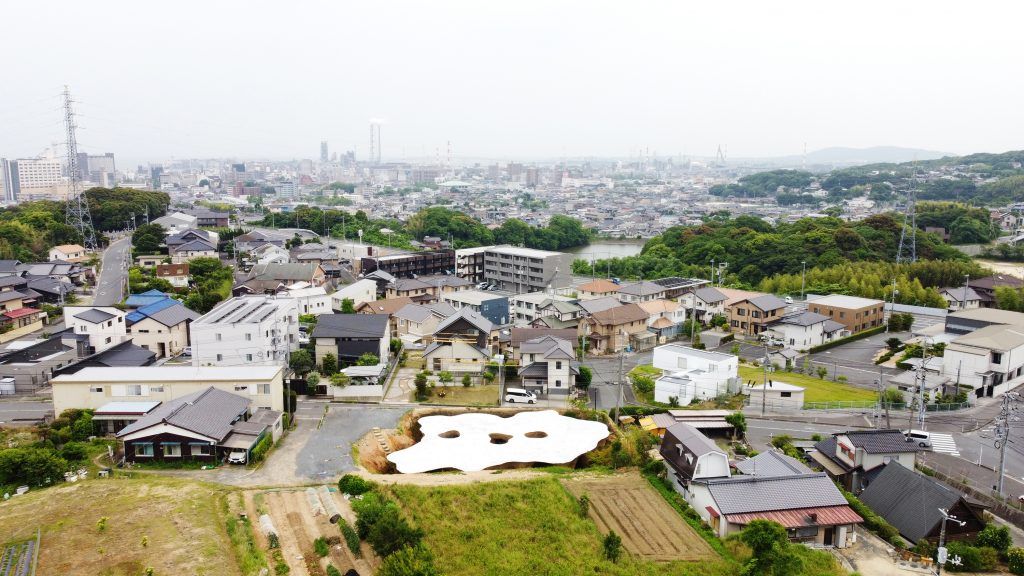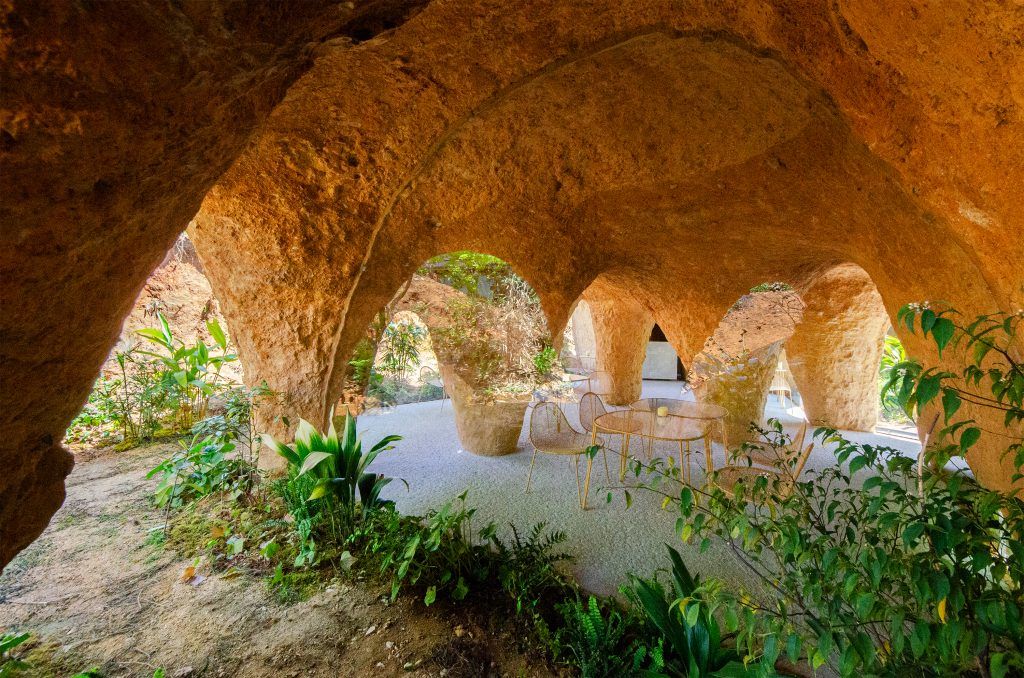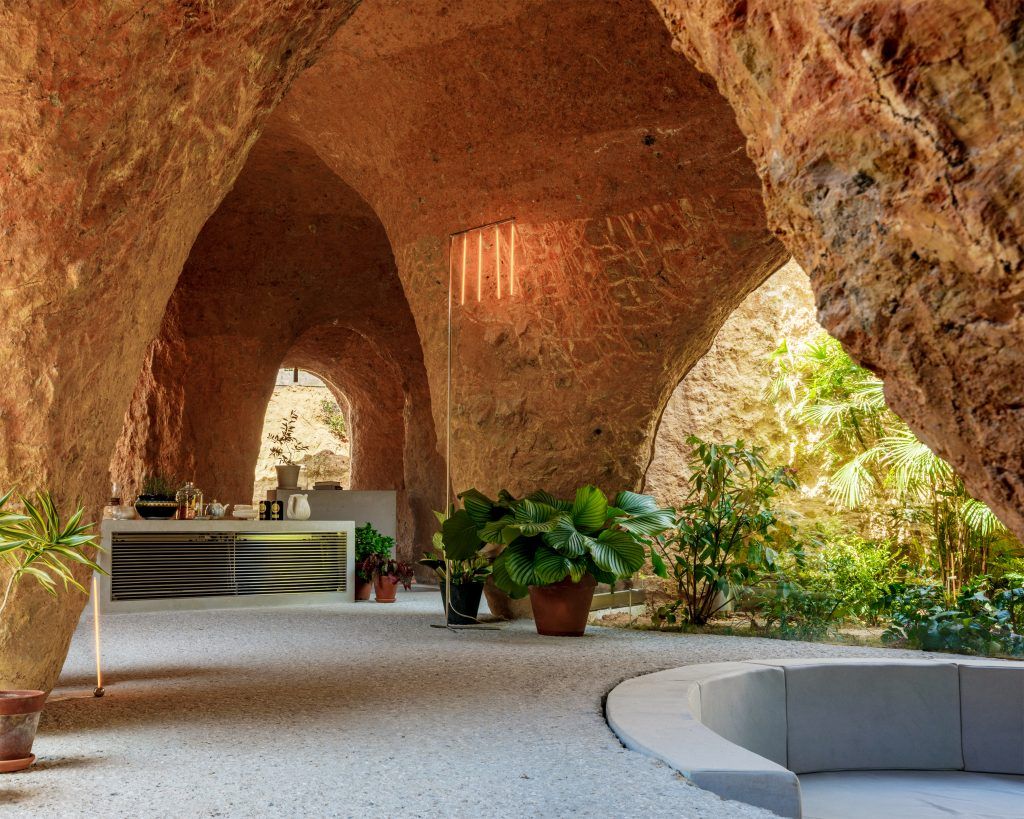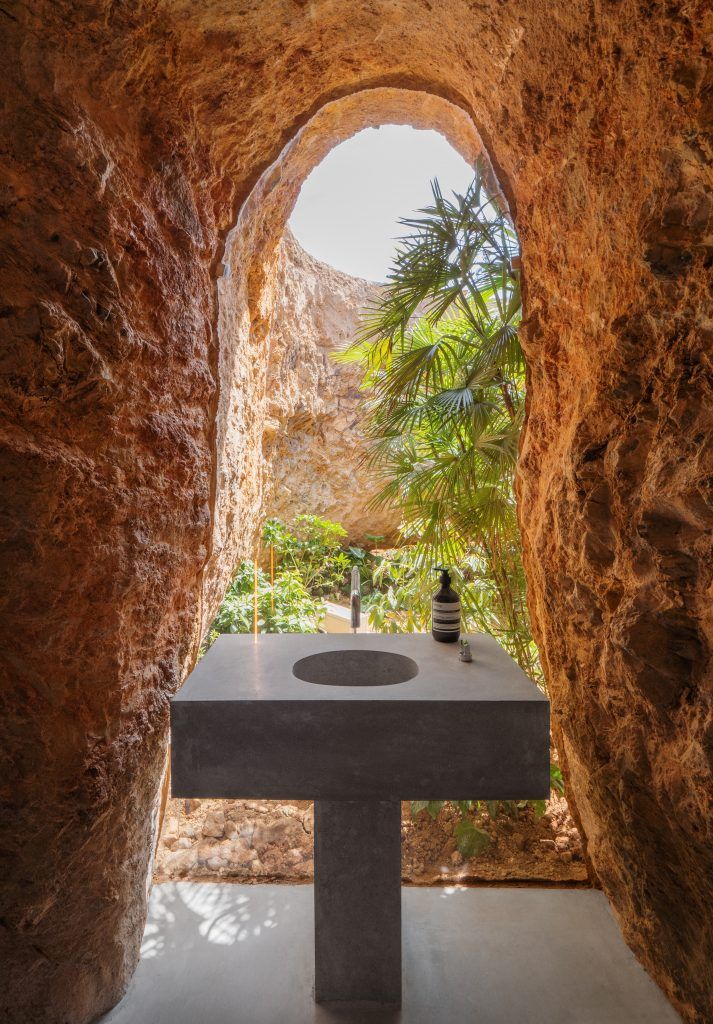This project is a residence cum restaurant for a French restaurant owner, who happens to be an old friend of the architect. He was also the one who commissioned the Tables for a Restaurant in the year 2008.
“I want an architecture whose heaviness would increase with time,” it cannot be artificially smooth but rather something with the roughness of nature. Authentic cuisines require such a place and “it has to look as if it has been there and will continue to be there for the longest time.” – briefed the client

To design a building as “heavy” as possible, the idea was to create a brand-new long-established restaurant, that is both a house and a restaurant. It had to be something he could pass on to his children and grandchildren.
The plan is arranged with the restaurant on the north and the residence on the south. To go back and forth between the spaces, they can walk through any one of the three courtyards that separate them.
The guests at the restaurant are invited the same way as friends would have been and it doesn’t stop there every time. At times, with someone special, they are even let into the living room or may even take up an overnight stay. Further, when the restaurant is closed, the hall serves as a place for the family to spend time or for the children to study.


In terms of construction, a process of constantly sharing, accepting, and referencing the un-precisions and accidents that occurred on the site was followed, in order to create an architecture that internalizes natural distortions and uncertainties. More specifically, a hole was dug in the ground to pour concrete, excavated the volume, and fixed glasses to create interior space.

First, a mass model that went through countless modifications was converted into 3D data. The 3D coordinate data was then input into a total station (TS) survey instrument to determine the points utilizing a navigation system for pile driving. At the same time, construction workers dug the hole manually for precision while constantly confirming the position and shape on an iPad.
Unexpected factors such as growing grass, soil collapsing, or errors due to manual labor were tolerated as much as possible.

As the structure was excavated after concrete solidification, it was caked with mud. With the range in geology, the nature and appearance of the soil differed from place to place. However, the initial concept of having to wash away the dirt to reveal a gray concrete structure was eliminated and the soil was retained as it is. By this period, the cave atmosphere was decoded and planned to be redesigned as a building with a new image.
In designing the interior space, through 3D images the differences between the design drawings and the actual surface coordinates of the excavated structure was visualized. This process further revealed new spaces that had not anticipated earlier due to overlapping discrepancies.


Thus the architectural design process was flipped, to reference the structure to determine the designs including the placement and number of glass pieces, arrangement and size of the furniture, and positions and details of MEP facilities. To simplify the plumbing route, the water supply and drainage were planned to pass through the three courtyards in a straight line, and faucets, drainage pipes, ventilation ducts, etc. were installed to penetrate the glass windows into the rooms.

The concrete mass will gradually be transformed into architecture through cut-and-try. “The owner will start a life here, run a restaurant, and continue to renew this place“- adds Junya Ishigami Associates
FACTFILE
- Architects: Junya Ishigami + Associates
- Location: Ube, japan
- Area: 270 SQM
- Client: Motonori Hirata
- Photographs :YASHIRO PHOTO OFFICE, Photo Ikko Dobashi
- Translator: Fraze Craze
